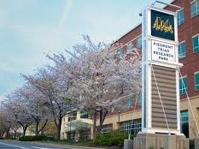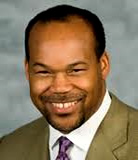What is a Research Park?
A who’s who of Little Rock business and political leaders are asking voters on Sept. 13 to approve a 3/8 percent sales tax increase to create the Central Arkansas Technology Park. The goal is to harness innovations coming out of research labs at UALR, UAMS, and Arkansas Children’s Hospital and generate new businesses and new, well-paying 21st century jobs.
So what is a research park and how does it create jobs?

Dr. Mary L. Good, founding dean of UALR’s Donaghey College of Engineering and Information Technology (EIT) and former undersecretary for technology in the U.S. Department of Commerce and Technology during President Clinton’s first term, says research parks do for cities and regions today what railroad lines and deep-water ports did for cities of the 19th and 20th centuries.
Since the 1950s, cities have built industrial parks to house businesses spun off from an area’s main manufacturing activity. Research parks do the same with the main economic raw material of the 21st century – knowledge.
Good, a former chair of the National Science Board, cited successful examples of research parks: M Square, the research park of the University of Maryland; the Purdue Research Park; the Research Park of Rensselaer Institute; and UC-ICAR at Clemson University.

A research park is a research facility, usually located close to a research university.
It creates a place that connects research going on at the university to industries wanting to take advantage of that research and with other entrepreneurs. The result is converting new research into new businesses that generate new jobs.
Throughout North America, there are more than 170 research parks. The first was created at Stanford University, followed by the Research Triangle in North Carolina.
“A 2009 review of research parks – ‘Comparative Innovation Policy: Understanding Research, Science and Technology Parks: Global Best Practices,’ published by The National Academies Press – indicates that parks succeed when when local communities, nearby universities, and local industry come together to build an entrepreneurial environment and a collaborative atmosphere,” Good said.
Research parks combine “knowledge assets” – university researchers and entrepreneurs – in a community with local business expertise with the aim to grow in a cluster of interconnected companies and associated institutions. Linking the research with entrepreneurs and industrialists, who see business opportunity in the research, creates the synergy that results in new and well-paid jobs.
Arkansas has one research park adjacent to the University of Arkansas at Fayetteville campus. Its focus mirrors the major businesses located in northwest Arkansas – biochemistry, food safety, poultry science (Tyson); transportation, materials, and logistics (Walmart), and more.

Little Rock businessman Dickson Flake, chair of the Technology Park Committee of the Little Rock Regional Chamber of Commerce, said a research park in Little Rock would focus on specific research ongoing at UALR, UAMS, and Arkansas Children’s Hospital Research Institute, that is ripe for commercialization, as well as work ongoing at the U.S. Food and Drug Administration’s National Toxicological Research Center just south of Little Rock.
“Already, through scientific collaboration at UALR and UAMS in nanomedicine, several new companies have been created,” Flake said.
The UALR-UAMS researchers have developed techniques to grow human tissue on nano-sized scaffolds, holding the promise of “growing” body parts. Another UALR-UAMS collaboration has developed a promising technique for killing individual cancer cells, a concept that would make the devastating effects of chemotherapy obsolete.
“The relationship of nanotechnology and medicine offers a real potential for creating a research cluster,” Flake said.

Harold Strong Jr., director of Discovery Park and Technology Transfer at the University of North Texas and president of the Association of University Research Parks (AURP), said while research parks create jobs for Ph.D. researchers and entrepreneurs, they also create jobs at all wage and skill levels in a ripple effect.
North Dakota State University Research & Technology Park generates $10.9 million annually for local and state governments. According to a recent economic impact study, the 19 businesses located at North Dakata’s park account for 893 direct, on-site jobs and another 551 indirect, off-site jobs.
The University of Nebraska Technology Park makes an estimated $589.6 million annual impact on the Nebraska economy, a recent study by the University of Nebraska–Lincoln Bureau of Business Research showed. A study of the park’s economic impact indicates a $151.3 million labor income impact spread across 4,320 jobs.
“Innovation and high-tech economic development projects are key to job creation,” Strong said.
Good said research parks provide the infrastructure needed to convert innovations being developed in a region into new businesses and new jobs. She believes it can happen in central Arkansas.
“Little Rock has not yet realized that institutions that have been built in the city over the past few years – UALR, UAMS, and Children’s Hospital – are nationally competitive enterprises with assets that can be exploited,” Good said.
A June 2009 study by the Angle Technology Group, commissioned by the Little Rock chamber, analyzed the research going on at UALR, UAMS, Arkansas Children’s Hospital, and NCTR and targeted specific industries and companies who would have an interest to open offices in a Little Rock technology park:
For example, the enterprise computing systems area is an important one for metro Little Rock, based on the presence of Acxiom and the information assurance research work underway at UALR.
UALR’s work in nano-related materials and applications would also be an attractor for research companies in this market. The food processing and safety focus area is also relevant for metro Little Rock due to the presence of Safe Foods Corp. and proximity of the FDA’s NCTR.
The study said private companies, both early-stage and mature, and university research projects in these focus areas will be good targets for research park marketing programs.
“Research parks create a sense of place where innovation can happen,” Flake said. “They are a place where science and business create synergy; where they are close to the professionals needed to turn an idea into a business. And that means jobs.”